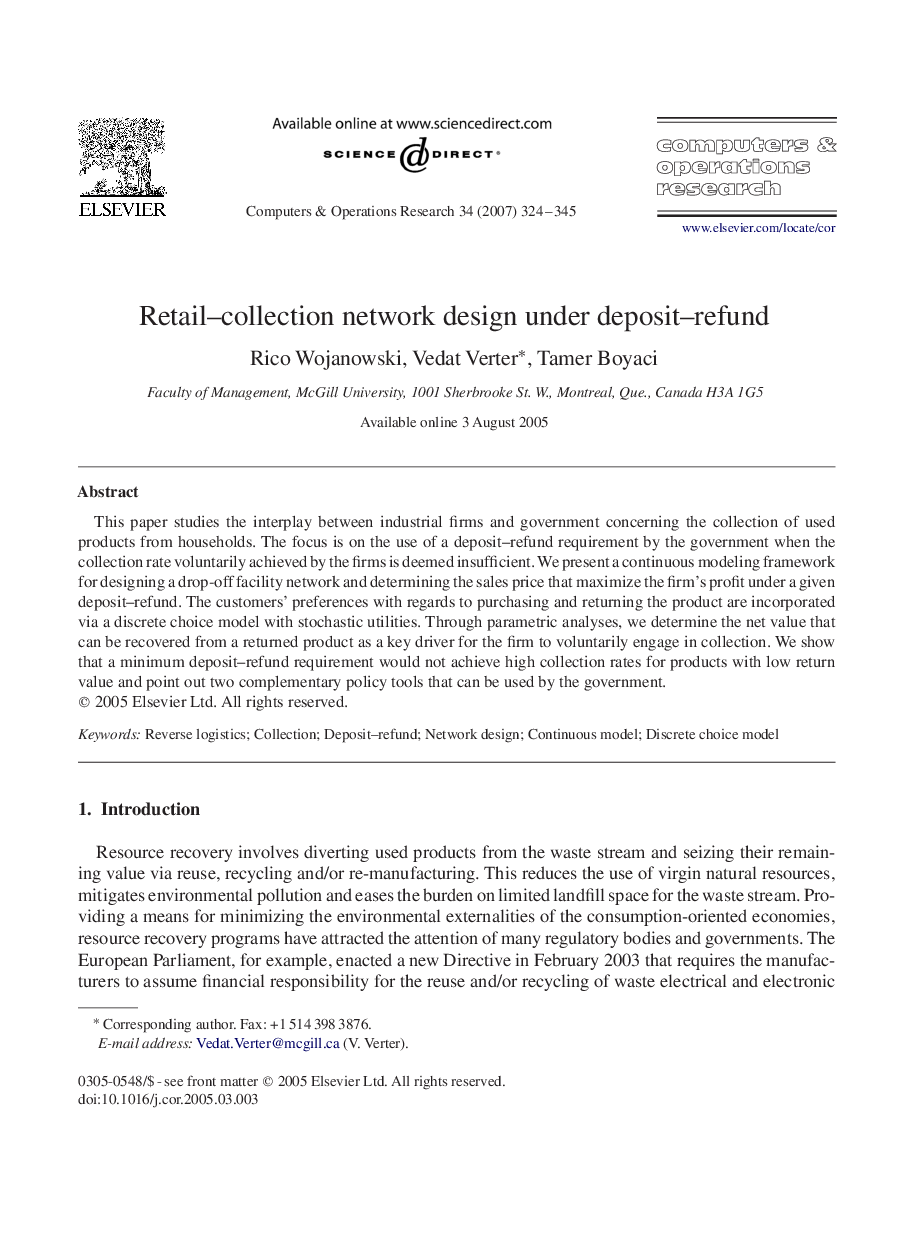| Article ID | Journal | Published Year | Pages | File Type |
|---|---|---|---|---|
| 476330 | Computers & Operations Research | 2007 | 22 Pages |
This paper studies the interplay between industrial firms and government concerning the collection of used products from households. The focus is on the use of a deposit–refund requirement by the government when the collection rate voluntarily achieved by the firms is deemed insufficient. We present a continuous modeling framework for designing a drop-off facility network and determining the sales price that maximize the firm's profit under a given deposit–refund. The customers’ preferences with regards to purchasing and returning the product are incorporated via a discrete choice model with stochastic utilities. Through parametric analyses, we determine the net value that can be recovered from a returned product as a key driver for the firm to voluntarily engage in collection. We show that a minimum deposit–refund requirement would not achieve high collection rates for products with low return value and point out two complementary policy tools that can be used by the government.
